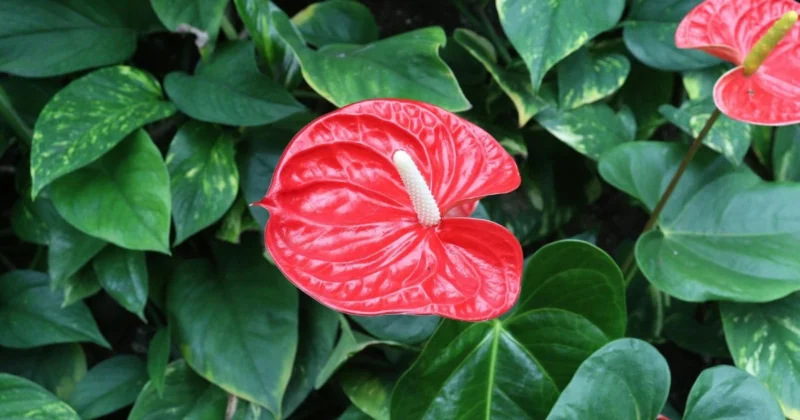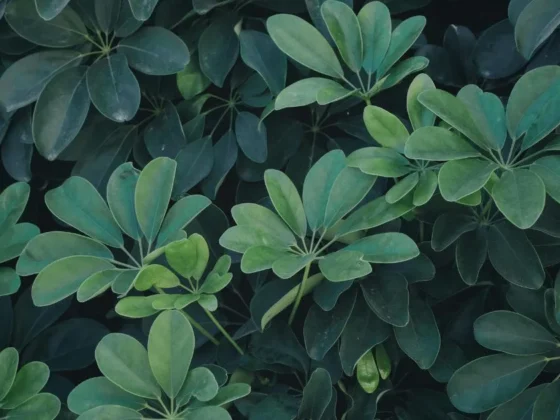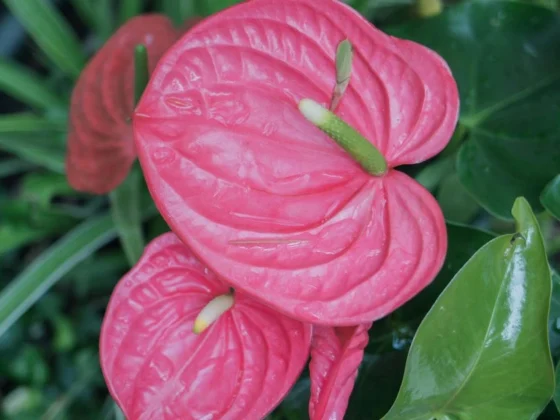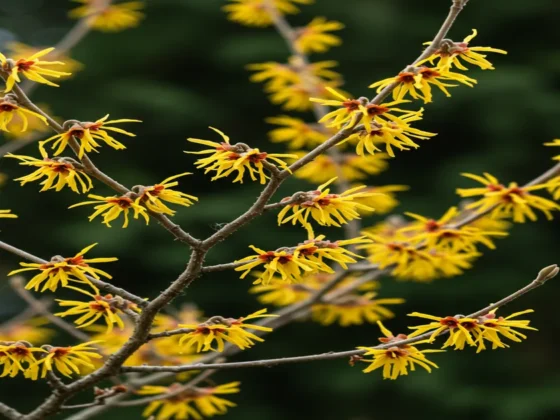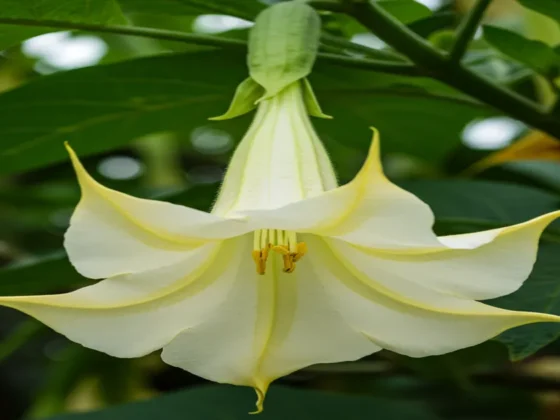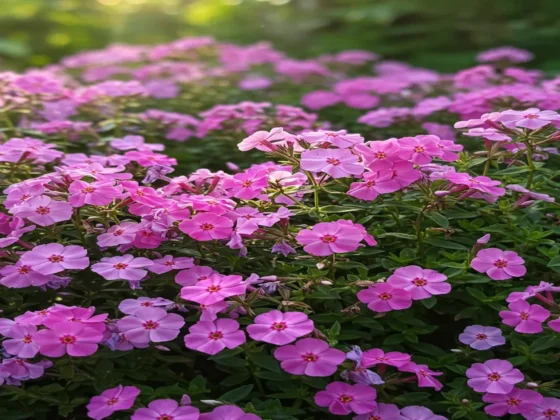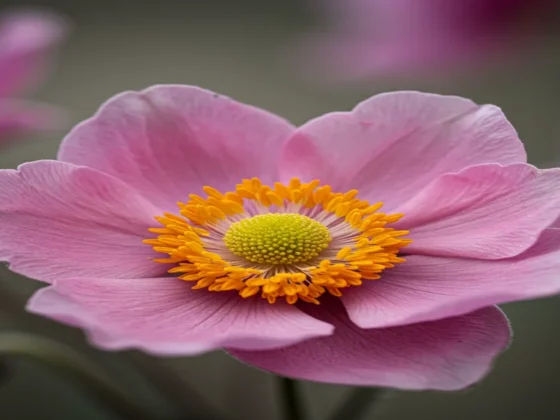Get ready to explore the world of anthurium plant care. The flamingo flower plant is known for its shiny, heart-shaped leaves and vibrant blooms. It adds elegance to your home and rewards you with beautiful spathes when cared for properly.
This guide will share simple tips on light, watering, and temperature. You’ll see why many love this easy-to-care-for houseplant. It can turn your space into a lush oasis.
The Many Beautiful Types of Anthurium Plants
Anthuriums belong to the Araceae group, which also includes Philodendrons. They are known for their glossy leaves and unique spadix. This gives your space a natural elegance. Each red flowered house plant in this family has a colorful spathe that contrasts beautifully with the green leaves.
These plants love conditions that remind them of their tropical home. You’ll see their spathes in shades of red, pink, or white. This creates a lovely contrast that brightens up any room. To keep them healthy, they need moderate light, proper watering, and occasional feeding.
Notable Features of Anthuriums
- Eye-Catching Spathe: The heart-shaped bract draws attention while protecting the central spadix.
- Diverse Colors: Red, pink, and white varieties offer versatility in home décor.
- Evergreen Appeal: Foliage stays glossy, adding vibrancy to your living areas.
Why Anthuriums Are Popular Indoor Plants
Many people love how easy these plants are to care for. They can thrive in bright windowsills or softly lit rooms. Their hardiness makes them perfect for those who want color without a lot of work.
| Anthurium Trait | Benefit |
|---|---|
| Glossy Leaves | Year-round greenery |
| Bold Spathe | Distinctive decorative feature |
| Adaptable Light Needs | Thrives in bright or semi-shaded spots |
Must-Have Tools and Materials for the Job
Having the right supplies is key to keeping your anthurium healthy. A strong container from Lechuza helps control moisture, reducing root stress. Soil from Miracle-Gro, mixed with lightweight additives, ensures good drainage.
Pruning shears from Felco make clean cuts, minimizing damage. Gloves from Spear & Jackson protect your hands when removing dead leaves or handling potting mix. A narrow-spout watering can helps direct moisture to the roots, avoiding splashes on leaves.
A humidity tray supports the plant’s tropical growth, reducing dryness. If stems grow tall or lean, a light stake or moss pole can offer support.
- Container with drainage
- High-quality potting mix
- Clean pruning shears
- Protective gloves
- Humidity tray
- Lightweight stake or moss pole
Caring for a white anthurium requires a consistent approach to keep its color bright. Regular cleaning of tools is crucial to prevent disease spread.
Choosing the Right Environment for Your Red Flowered House Plant
Creating the right space helps your plant grow well and bloom long. It needs gentle air and a warm spot without big temperature changes. This care keeps your plant’s leaves green and its colors bright.
Optimal Lighting Conditions
Light is good, but direct sun can hurt the leaves. Place your plant by a window with a curtain or use a filtered light. If your home is dark, grow lamps can help. They let your plant make food and stay healthy all year.
Humidity Levels That Promote Growth
A humid place makes leaves shiny and flowers bright. Mist the leaves a few times a week or use a tray with water and pebbles. Humidifiers are also great for keeping the air moist, especially in dry places. These steps help your plant get the moisture it needs to do well indoors.
Propagating White Anthurium : Step-by-Step Guidance
Starting your white Anthurium collection is a gentle process. Look at the roots and pick strong shoots with healthy growth. This way, you can grow plants that are as elegant as a flamingo flower plant.
First, get a clean pot and fill it with a mix that breathes well. Use a sharp tool to split the parent Anthurium’s roots. Make sure each piece has enough roots. Put each division in its own pot, press the soil a bit, and mist it to settle. Place these young plants in a spot with moderate light.
- Carefully remove the Anthurium from its old pot.
- Look for mature clusters with robust roots.
- Transfer each portion to a separate pot.
- Maintain balanced moisture and indirect light.
With time, new roots will grow strong. Soon, you’ll see fresh stems that look like a flamingo flower plant but in white.
| Propagation Step | Suggested Tip |
|---|---|
| Root Division | Remove damaged growth before repotting |
| Sterile Tools | Disinfect scissors with rubbing alcohol |
| Ideal Soil | Combine bark chips with peat moss |
| Humidity Level | Keep around 60% for healthy outcomes |
Watering Techniques for Vibrant Anthurium Blooms
Your Anthurium needs balanced moisture for its roots. Too much water can harm the roots, while too little makes leaves weak. Finding the right watering schedule can make your red flowered house plant bloom brighter.
This careful method helps all red flowered house plants stay hydrated. It keeps them looking vibrant. Watch how your soil feels and change your watering plan if needed.
Establishing a Consistent Watering Routine
Start by checking the top inch of soil. Wait until it’s a bit dry before watering. This keeps the roots from getting too wet.
Signs of Overwatering or Underwatering
Yellow leaves or soft stems mean too much water. If leaves are wilted or feel crispy, it’s time to water. Watch for these signs and adjust your watering as the seasons change.
How Water Quality Affects Anthurium Health
Tap water can add minerals to the soil. This can harm your plant. Using filtered or distilled water helps your plant grow better.
- Let water reach room temperature before use
- Avoid saturated trays or saucers
- Flush soil occasionally to reduce salt buildup
“Regular checks keep your Anthurium bright and healthy,” advises the Royal Horticultural Society.
Temperature and Humidity Tips
Keeping your Anthurium warm is key for lush growth and blooms. Aim for temperatures between 65°F to 80°F, similar to the UK’s climate. If it gets below 60°F, growth might slow down, so watch for drafts.
Experts, like those from the Royal Horticultural Society, suggest keeping sensitive plants like white anthurium away from cold spots. Place them near warm walls or corners. This keeps them cozy and balanced all year.
“Indoor plants flourish in settings that mirror their natural habitat. Maintaining stable warmth and at least 50% humidity often paves the way for vibrant leaves and blossoms. ”
If the air gets too dry, use a humidifier or mist your Anthurium. This helps prevent brown leaves and keeps it looking vibrant.
Soil and Fertilizer Secrets
A healthy foundation is key when you nurture these striking blooms. Your container should drain well, allowing excess water to escape. This helps you avoid soggy roots and keeps your anthurium plant care routine on track.
Creating the Ideal Potting Mix
Choose materials that promote airflow while supporting moisture retention. A blend of peat moss, orchid bark, and perlite can offer the right balance. You may experiment with different ratios, yet a loose and airy texture is essential. Check the drainage holes often to confirm the mix is not compacted.
How and When to Fertilize Your Anthurium
Your plant stays more vibrant with a balanced, water-soluble houseplant formula. Dilute it by half strength and feed every four to six weeks during active growth. This schedule can discourage salt buildup and maintain leaf shine. A steady routine helps you keep anthurium plant care straightforward and effective. If leaves appear dull, scale back on fertilizer frequency before adjusting other conditions.
Preventing and Treating Pests and Diseases
Keeping an eye on your flamingo flower plant is crucial. Spotting pests or diseases early lets you act fast. This protects your plant’s beautiful leaves and flowers.
Regularly clean and check your plant’s leaves. Look for yellow spots or webs. These signs mean you need to take action to keep your plant healthy.
Identifying Common Houseplant Insects
Spider mites leave speckled leaves. Aphids create sticky spots on stems and leaves. Mealybugs look cottony in corners, and scale bumps slow growth.
Quickly remove bad leaves and keep new plants separate. This stops pests from spreading.
Natural and Safe Pest Control Methods
Try using insecticidal soaps or neem oil spray. These methods are kind to your plant and keep pests away. They don’t leave harmful chemicals behind.
Water right, ensure good air flow, and trim damaged leaves. These steps help prevent fungal diseases. Your Anthurium will stay bright and pest-free.
anthurium anthurium : Showcasing Different Varieties
The Anthurium genus is full of surprises in shape and color. You might see bold red spathes, delicate pink hues, or velvety greens. Some have heart-shaped leaves with intricate venation, adding texture and charm.
Each variety adds its own unique character. This transforms any living area into a botanical retreat. It’s like having a piece of nature right in your home.
Sleek hybrids have bright spathes that stand out against glossy foliage. Larger upright forms impress with striking leaf patterns. These plants are perfect for both beginners and seasoned enthusiasts.
They encourage you to try new silhouettes, heights, and growth habits. It’s a chance to explore and create something beautiful.
“A vast range of Anthuriums inspires creative home styling,” notes the Royal Horticultural Society.
Caring for multiple varieties helps you improve your anthurium plant care skills. By observing each plant’s leaf shape and light needs, you create a balanced environment. With the right care, these plants thrive, adding vibrant growth and elegance to your home.
Styling and Decorating with Flamingo Flower Plant
Adding this enchanting plant to your space brings a fresh vibe. A sleek pot showcases its unique shape, highlighting each vibrant part. The right spot makes your anthurium pop with your décor.
Creative Placement Ideas Around Your Home
Place a white anthurium near a dark wall for a stunning contrast. A bright spot can make its petals shine. You can also use it as a centerpiece or eye-level decoration.
Neutral interiors get a boost from its bright color. It adds life to calm spaces.
Combining Anthuriums with Other Plants
Pair your Flamingo Flower with big-leafed plants like Monstera or Ferns. This creates a lush, tropical feel at home. Different heights and leaf shapes add balance and beauty.
Grouping various plants together adds drama. It highlights your white anthurium and other colorful blooms.
Common Mistakes to Avoid in Anthurium Plant Care
One common mistake is ignoring how strong light affects your plant. Too much sun can burn the leaves and harm the flowers. Find a spot in your home where the light is bright but not direct.
- Using soil that traps moisture or pooling water in the plant’s container
- Skipping routine checks for insects
- Irrational fertilizing that leads to burned roots or stunted growth
These mistakes happen when we forget the basics and ignore warning signs. Check the soil often to avoid too much water. Also, look for pests on the underside of leaves. Acting fast can save your other plants.
By catching problems early, you can keep your red flowered house plant thriving all year.
Conclusion
Your flamingo flower plant adds a burst of tropical color to your home. It thrives in bright, indirect light and needs regular watering. This keeps its leaves lush and its spathe shiny.
Good airflow is key. Open a window when you can. This lets the plant breathe in fresh air and prevents mildew.
Using a balanced fertilizer makes the plant’s spathes brighter and its roots healthier. Check the soil’s moisture weekly. A humid environment makes your plant stronger.
Placing a tray of water nearby can increase humidity. This leads to fuller, more vibrant leaves.
Your care routine showcases the beauty of these tropical plants. Keep your space clean, water regularly, and maintain stable temperatures. You’ll enjoy striking blooms and a refreshing energy boost.
FAQ
How do you start with basic Anthurium plant care ?
Start by placing your Anthurium in bright, indirect light. Water it when the top inch of soil dries out. This keeps it hydrated without being too wet.
Keep the humidity moderate and the temperature between 65°F and 80°F. This helps your plant bloom longer and stay healthy.
What is the best way to keep a red flowered house plant from wilting ?
Consistency is key. Check the soil moisture often and water when it’s partially dry. Avoid overwatering to prevent root rot.
Underwatering can make leaves limp and blooms weak. So, keep the soil moist but not soggy.
How can you help a white Anthurium retain its pristine color ?
Provide filtered light and avoid direct sunlight to prevent sunburn. Use a potting mix with perlite or orchid bark for good drainage.
This helps keep the white blooms bright and unblemished.
Can you propagate a flamingo flower plant easily at home ?
Yes, you can. Divide the plant when repotting or take stem cuttings with at least one node. Keep them warm and humid for faster rooting.
Don’t overwater until the roots grow well.
What lighting conditions are ideal for proper anthurium plant care ?
Bright, indirect light is best. Direct sunlight can burn the leaves. Insufficient light may reduce blooms.
A spot near a window with filtered light is perfect.
Do Anthuriums need special fertilizer ?
A balanced, water-soluble fertilizer at half strength is enough. Feed your Anthurium every four to six weeks in the growing season.
Reduce fertilizing in colder months to avoid damage.
How do you address pest issues on a white Anthurium ?
Regularly check for pests like spider mites or mealybugs. Use natural solutions like insecticidal soap or neem oil first.
Isolate affected plants to stop infestations from spreading.
What are some signs that you need to repot your flamingo flower plant ?
Look for circling roots or slow growth. Repot in a slightly larger container with fresh, well-draining mix.
This encourages healthy root growth.
Is high humidity essential for all types of Anthuriums ?
While adaptable, higher humidity (50% or more) benefits all Anthuriums. If your air is dry, mist the leaves or use a humidifier.
What are some common mistakes to avoid in anthurium plant care ?
Overwatering is a big mistake, leading to root rot. Avoid harsh direct sunlight and neglecting humidity.
Regularly check for pests or nutrient deficiencies. Fixing these issues quickly keeps your plant thriving.


